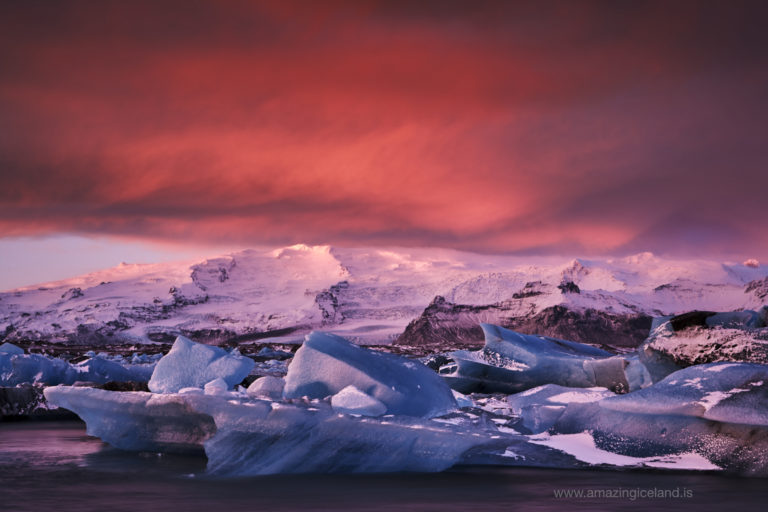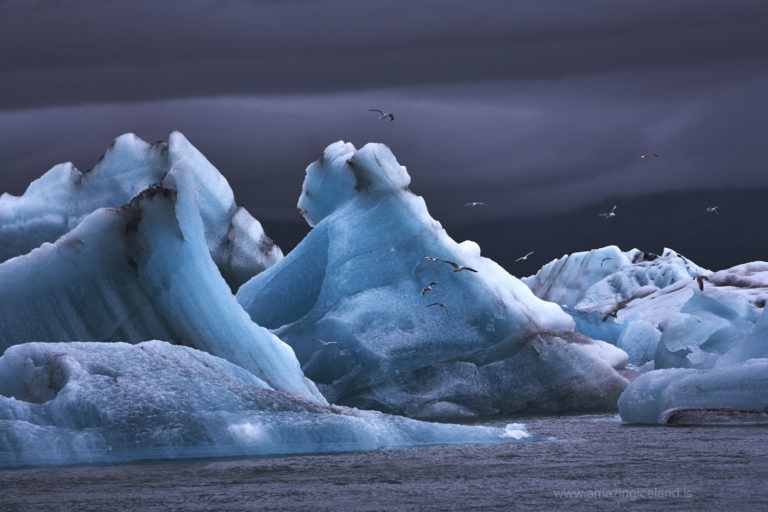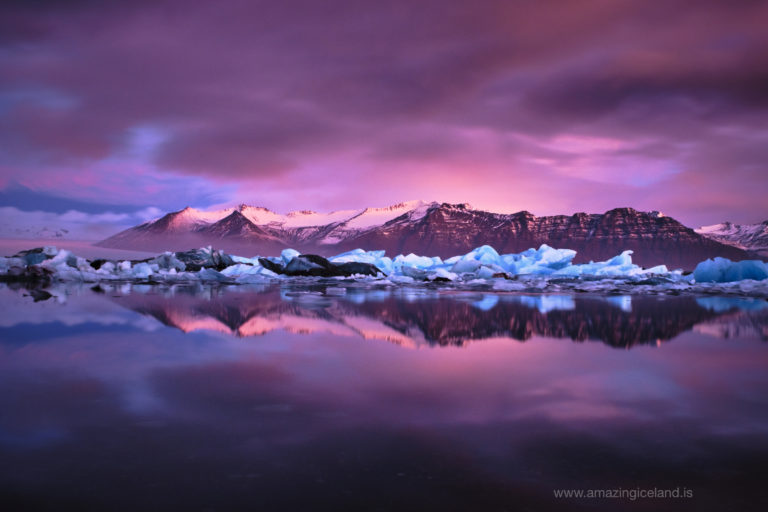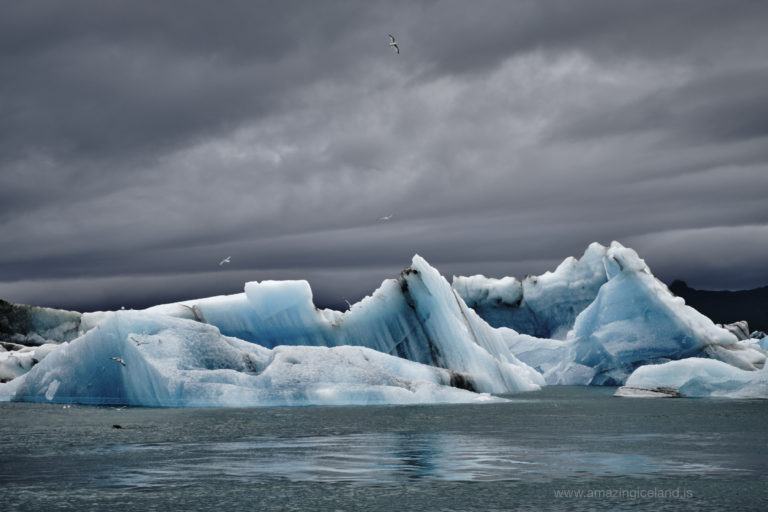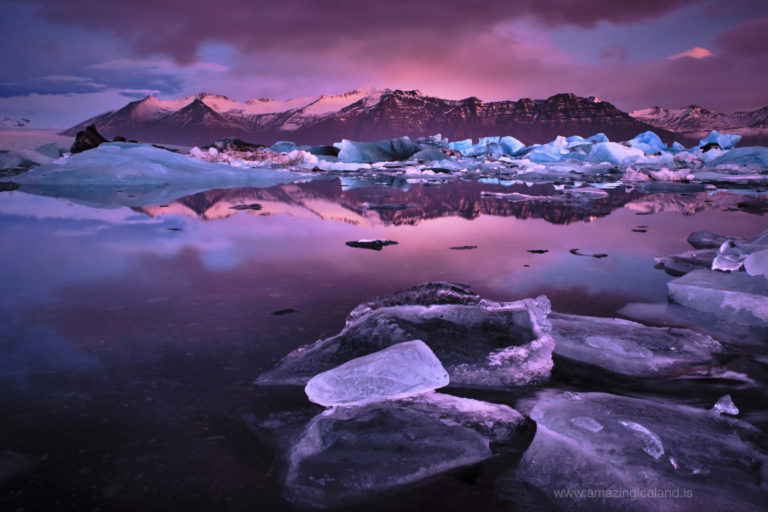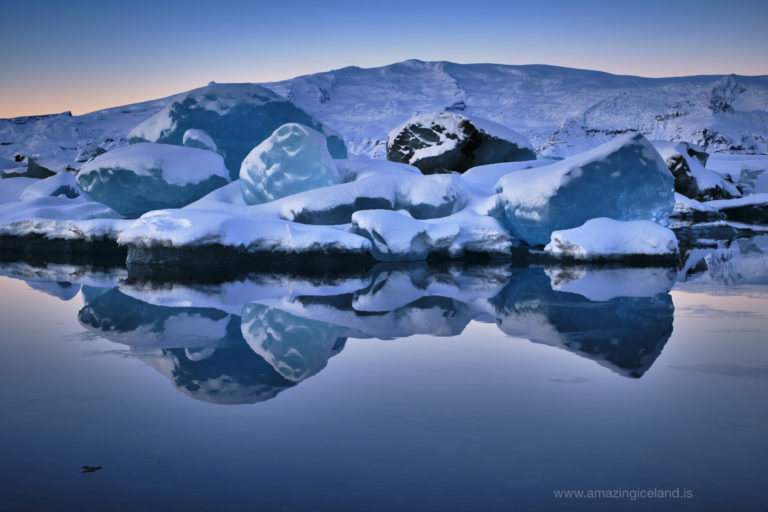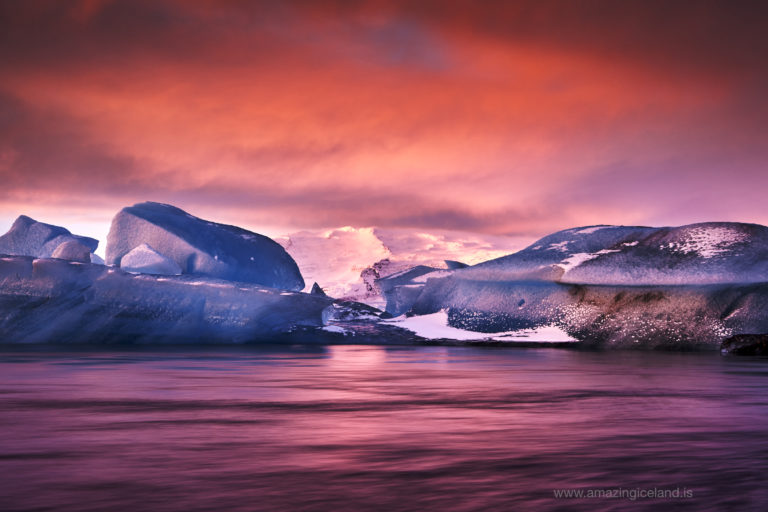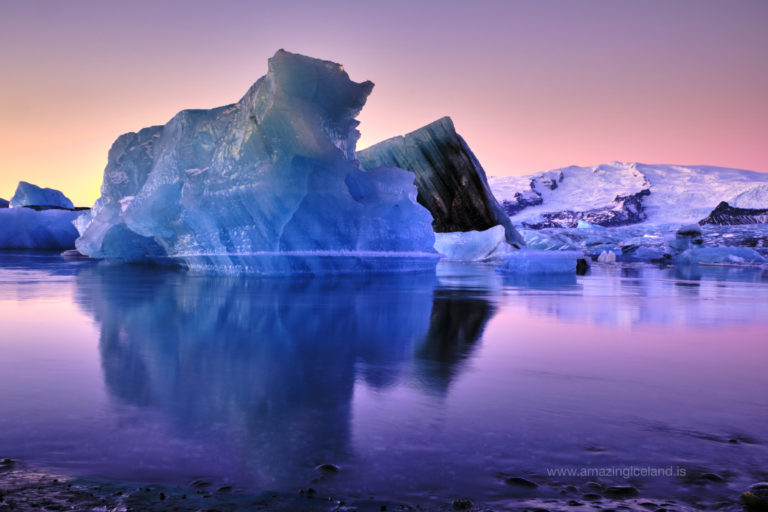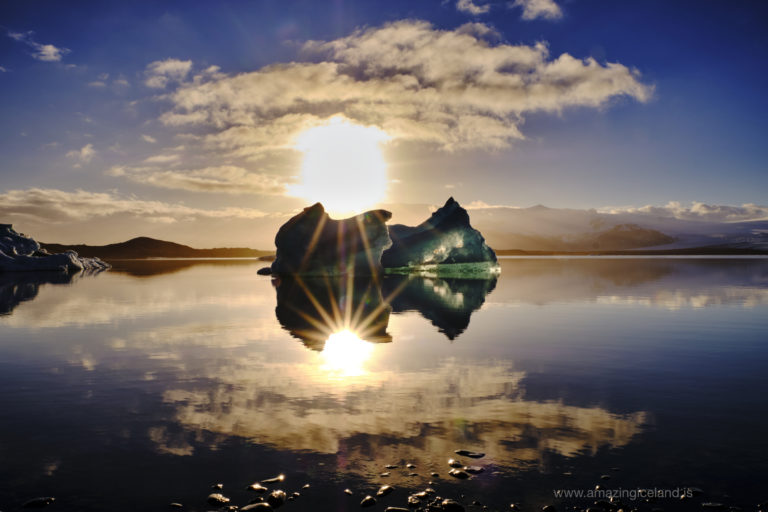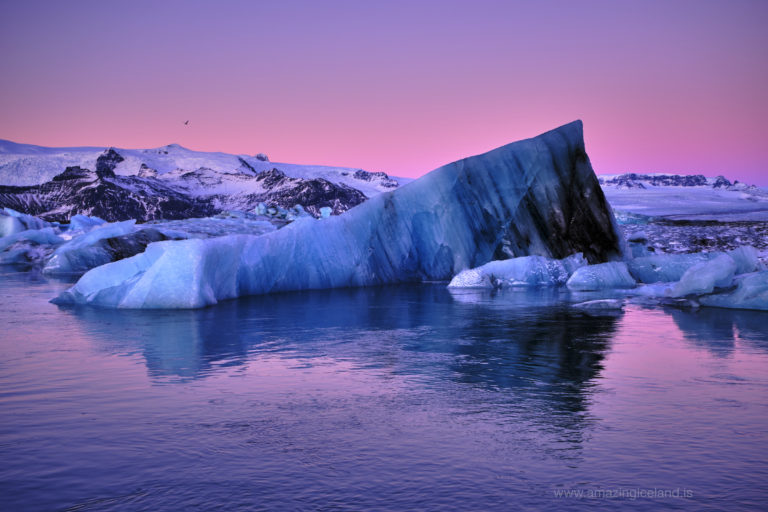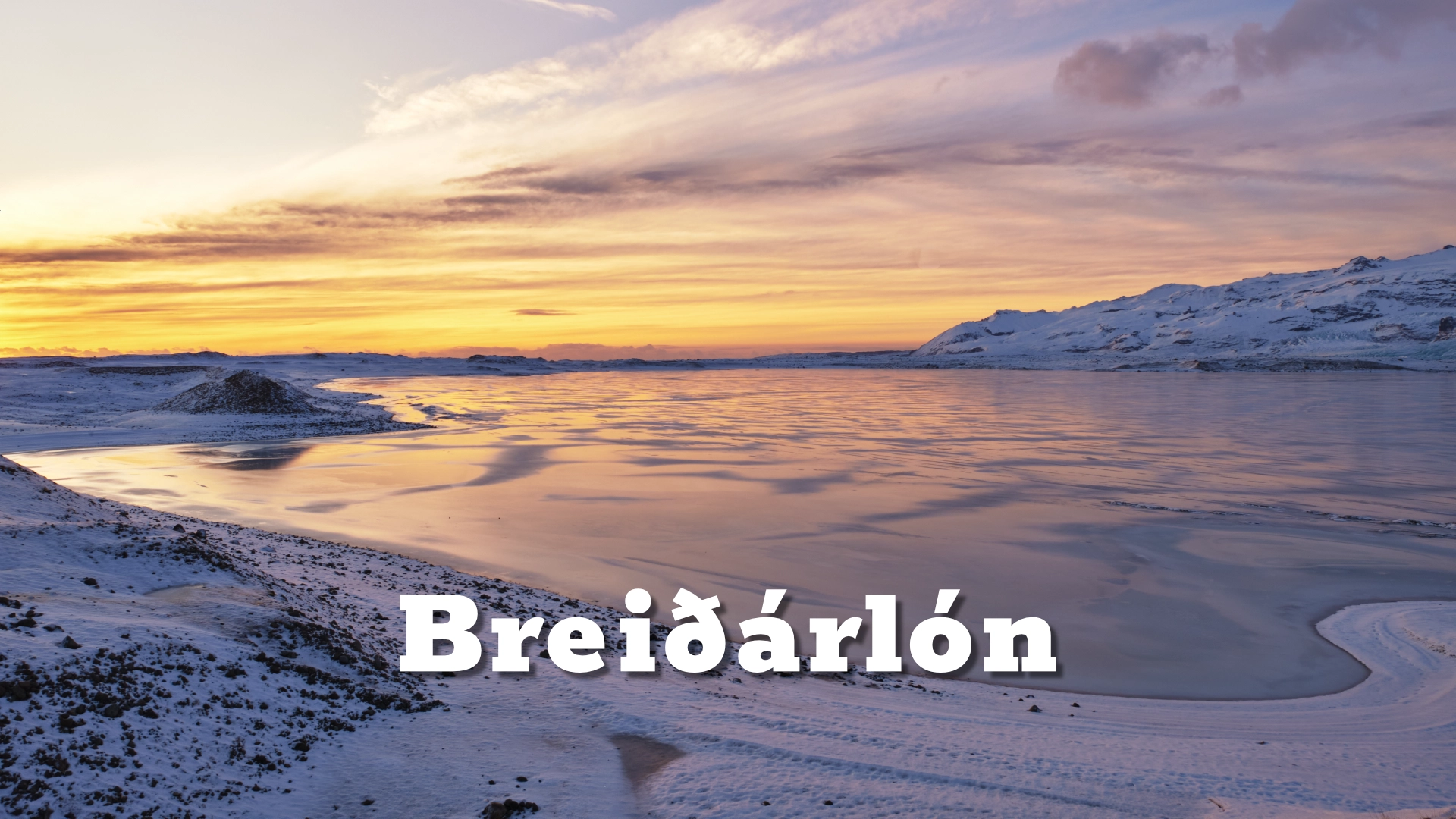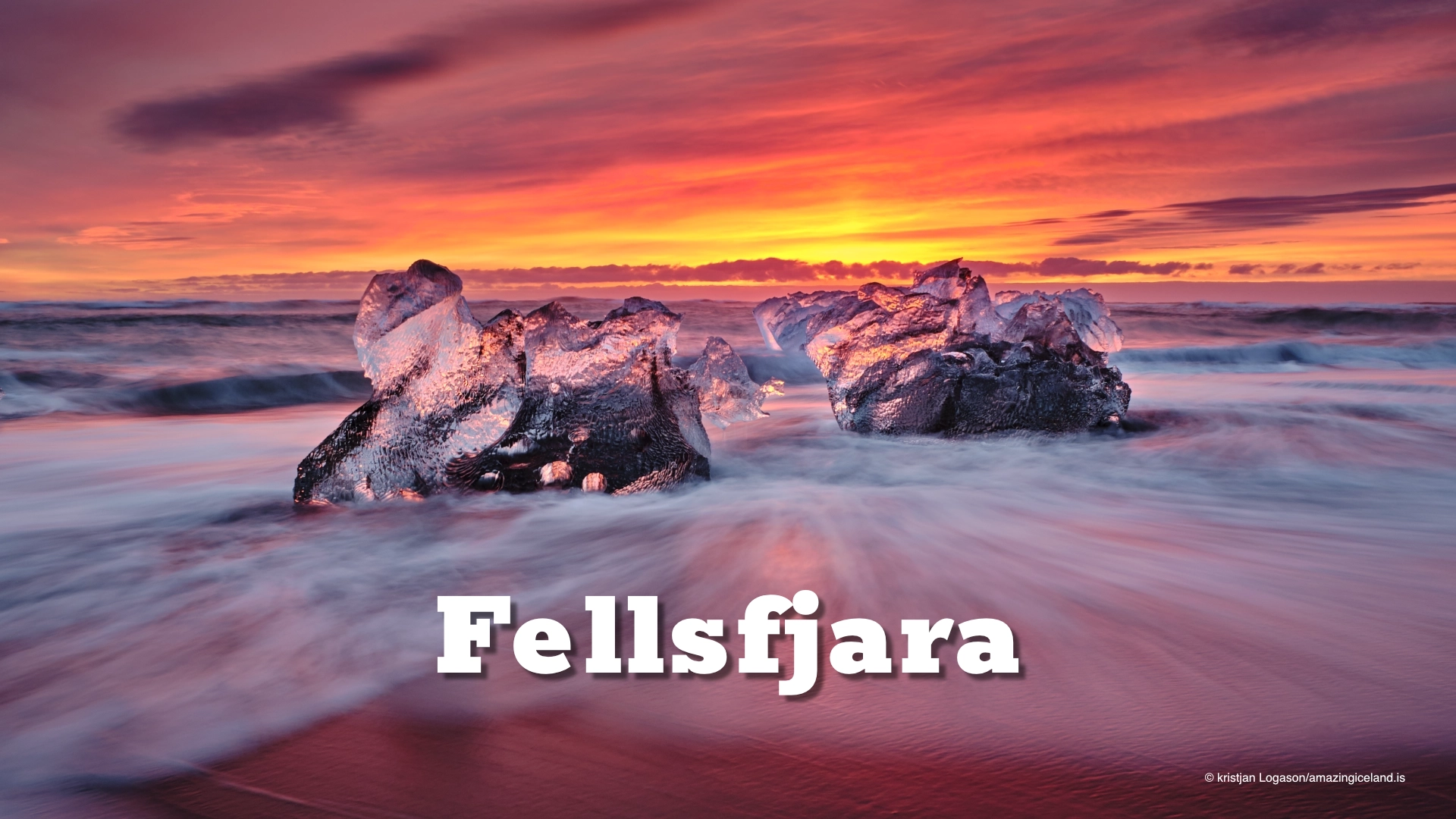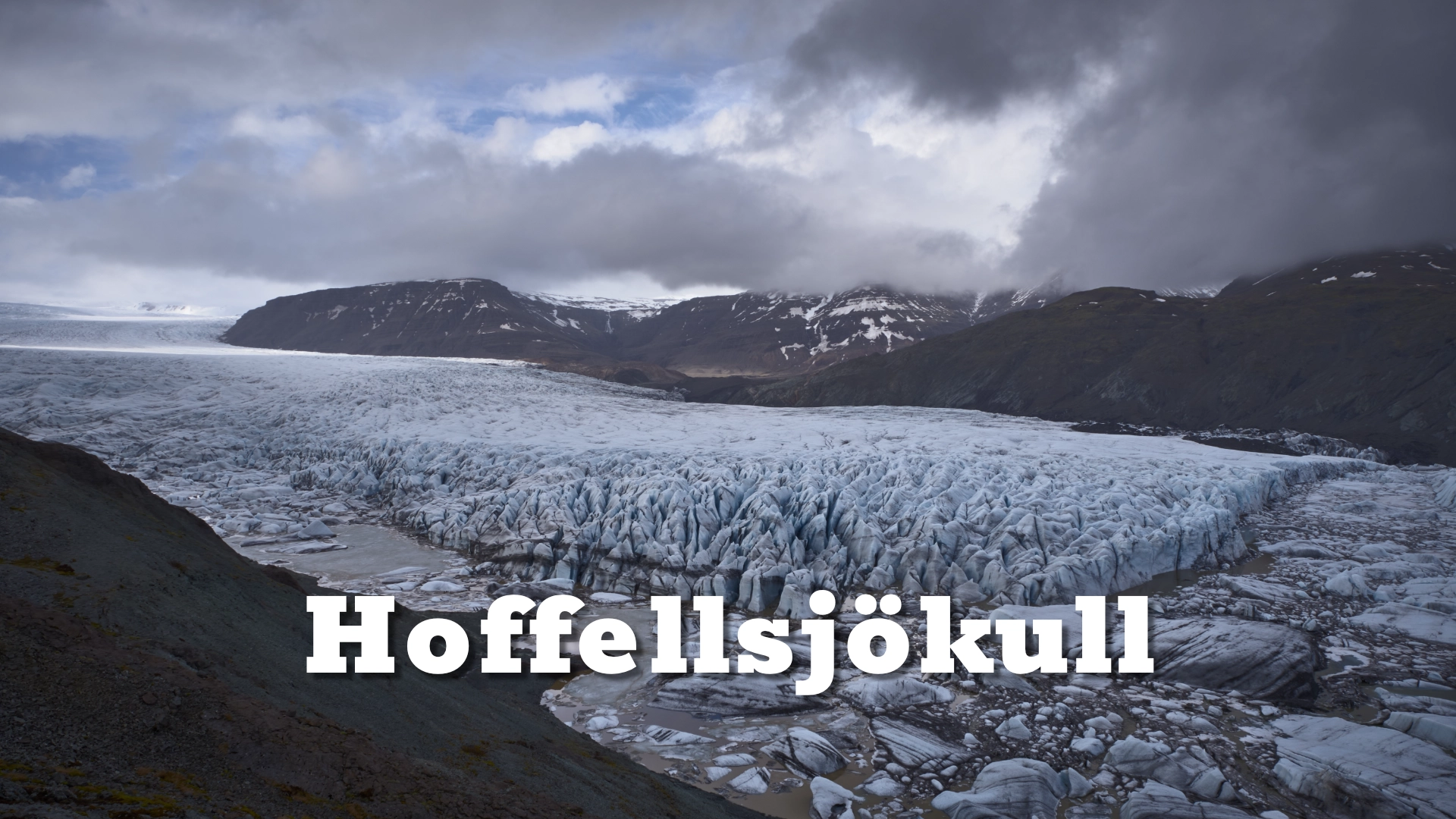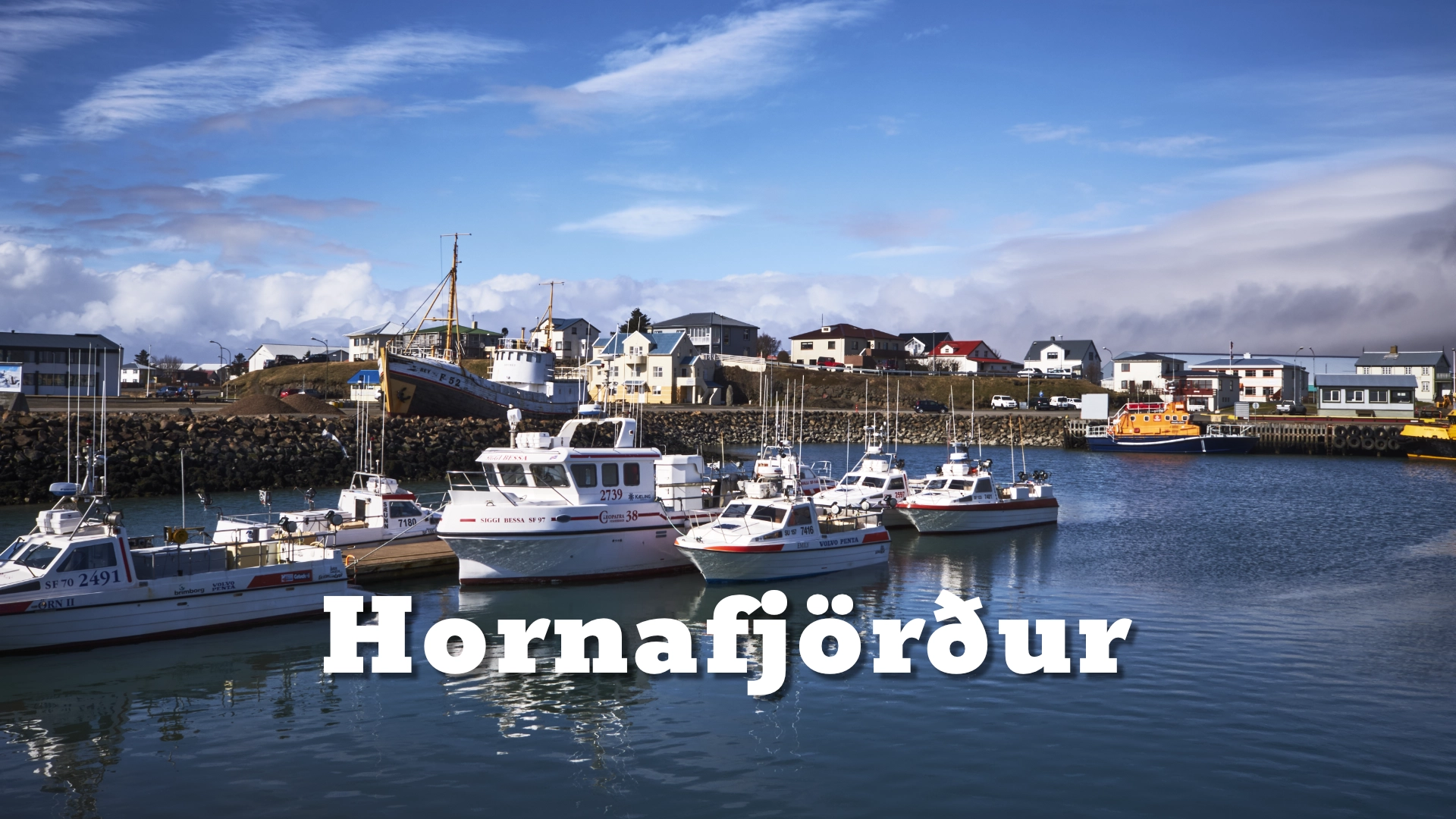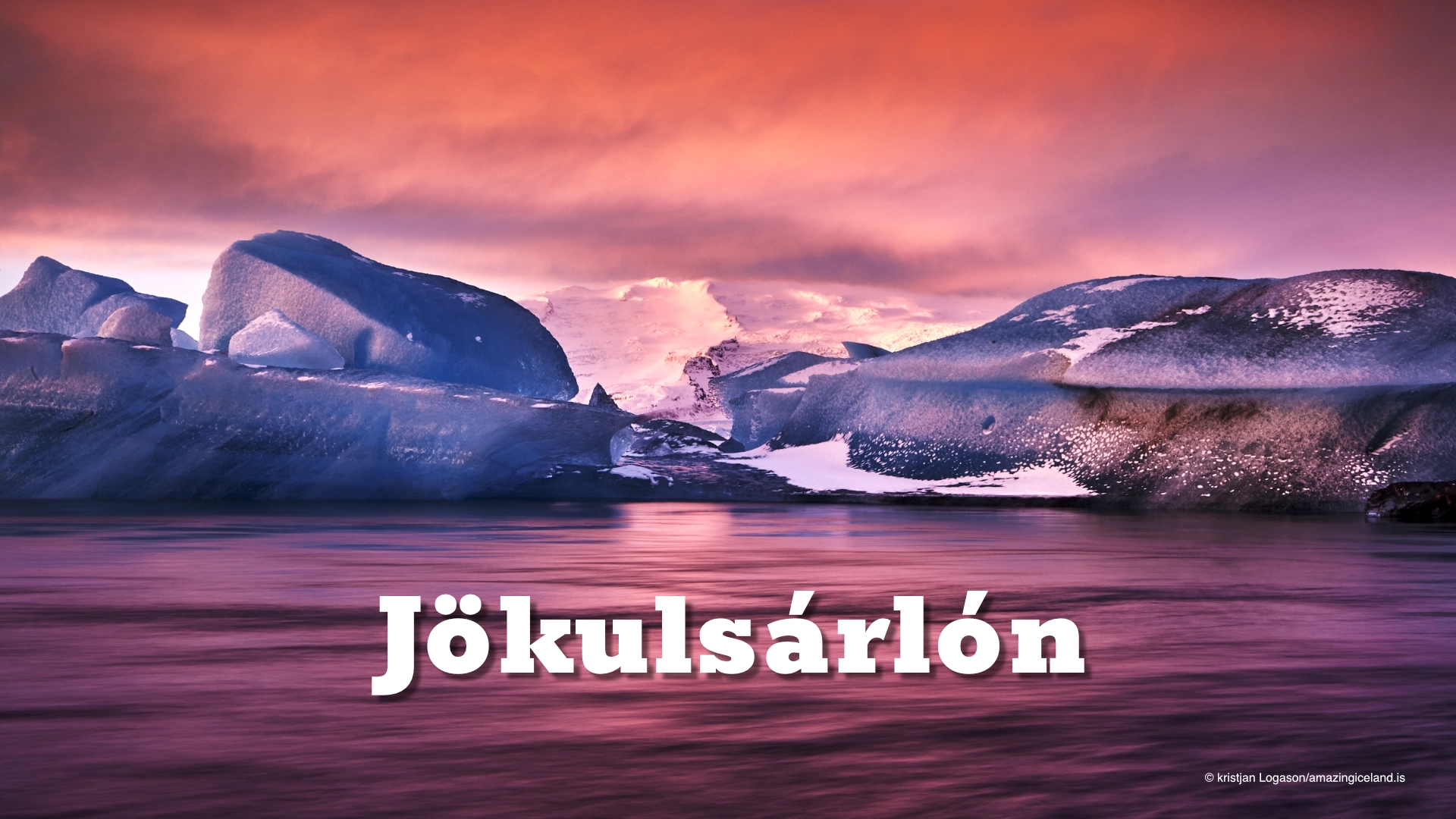
The glacier lagoon was created as a result of the rising temperatures between 1920 and 1965. The Breidamerkurjokull glacier tongue rapidly retreated during this time, creating icebergs of varying size that melted quickly and formed a lagoon around 1960. The resulting lake is more than 200 meters (660 ft) deep where the glacier originally existed.
The location of Jokulsarlon Glacier Lagoon
Latitude
N64° 3' 26.260"
Longitude
W16° 13' 3.333"
Jokulsarlon Glacier Lagoon
The glacier lagoon
The beautiful Breiðamerkurjökull glacier is constantly shedding giant blocks of ice into the stunning lagoon below. At 250 meters deep, this is the deepest lake in all of Iceland!
Breiðamerkurjökull is an outlet glacier of the much larger Vatnajökull. The icebergs that calve off the edge of the glacier and float down river eventually become entrenched at the bottom of the lagoon. However, they will start floating again as icebergs when they have melted enough to be light enough to drift out to sea. These icebergs can be seen in two shades: milky white and bright blue. The coloration depends on the amount of air trapped within the ice and is an interplay of light and ice crystals.
The first settlers arrived in Iceland around AD 870, when the edge of the tongue of Breiðamerkurjökull glacier was about 20 km (12 mi) further north of its present location. During the Little Ice Age between 1600 and 1900, with lower temperatures prevailing in these latitudes, the glacier had grown by up to about 1 km (0.62 mi) from the coast at Jokulsá River, by about 1890.
When the temperatures rose between 1920 and 1965, the Breiðamerkurjökull glacier tongue rapidly retreated, continually creating icebergs of varying size, thus creating a lagoon in its wake around 1934–35.
The lake is over 200 m (660 ft) deep where the glacier snout originally existed. Glacial moraines became exposed on both sides of the lake.
In 1975, the lake was about 8 km2 (3.1 sq mi) in area and now it reportedly stands at 18 km2 (6.9 sq mi) at the edge of the glacier tongue.
In spite of being a rather recent formation, Jökulsárlón is the deepest lake in the country, with depths of 248 metres (814 feet). With a surface area of 18 square kilometres (7 square miles), it is also growing to be one of the largest.
Interesting facts:
1965 there was no lake visible.
The Locomotive Elite
What do Donald Trump and Iceland’s Locomotive Elite have in common?
Far more than you think.
In The Locomotive Elite, you’ll uncover how a tiny clique in Iceland captured extensive control—of banks, courts, media, and even the central bank.
For decades they ruled, first democratically, then through corruption and in the end through crime, enriching themselves and their cronies while dismantling oversight.
The result?
One of the most spectacular financial collapses in modern history.
